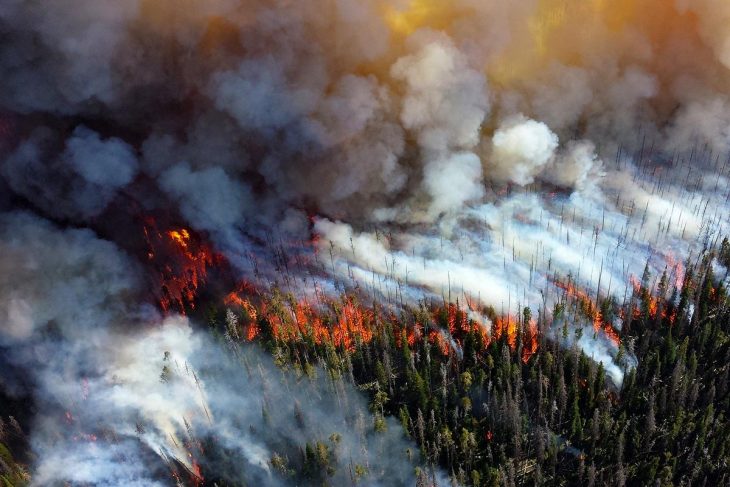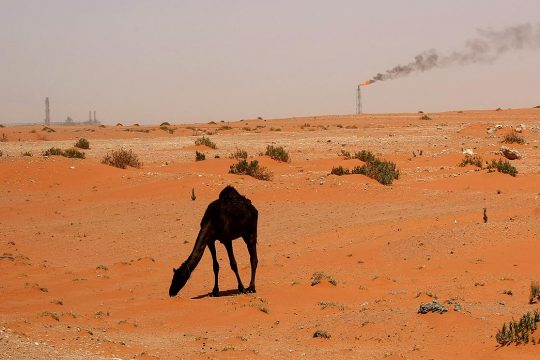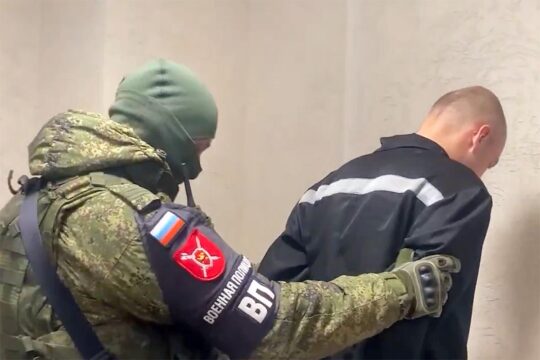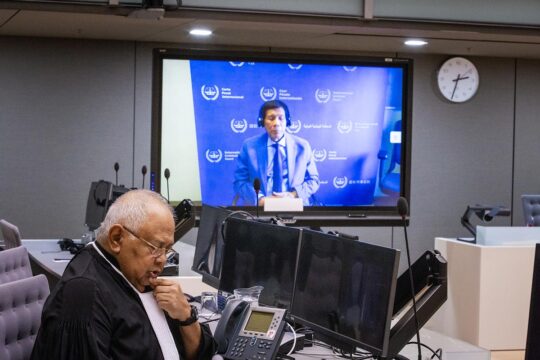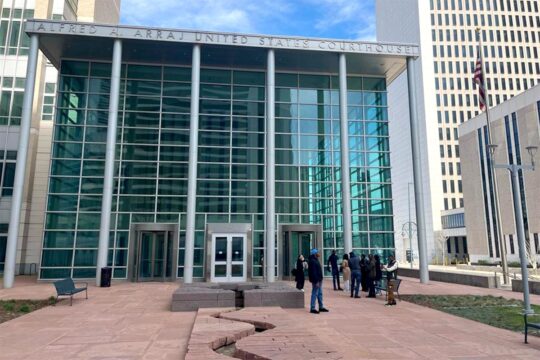Russia, the world’s fourth largest emitter, has signed all UN climate treaties, including the UN Framework Convention on Climate Change and the Paris Agreement. To prevent dangerous interference with the climatic system, Russia is therefore bound to develop and implement effective measures aimed at reducing its greenhouse gas emissions and reach net-zero carbon emissions by 2050 or soon after.
But on 11 September 2022, a coalition of Russian human rights organizations and activists filed the first ever Russian climate case before the Supreme Court. Their lawsuit challenges the country's long-term climate strategy as inconsistent with its national and international obligations. The plaintiffs, citing the independent organization Climate Action Tracker, claim in their brief that the actions - or inactions - envisaged are "critically insufficient" and that the implementation of the Russian strategy involves serious violations of several fundamental human rights.
Forest absorption of greenhouse gases
Instead of the significant reductions needed, the Russian Climate Strategy, defined by a Presidential Decree and a Governmental Order, assumes an increase in the Russian greenhouse gas emissions level by 2030 compared to 1990. The measures envisaged focus exclusively on carbon dioxide removal techniques to enable the achievement of the net-zero target by 2060. The Russian Strategy proposes to boost the absorption of greenhouse gas emissions through land use change and forestry. In essence, Russia considers that its forests will absorb most of its carbon emissions, regardless of their level. The Strategy does not provide any detail on how or when these measures will be implemented or what their projected impact on emissions would be.
These are some of the arguments developed in the coalition’s case to demonstrate that the policies and actions outlined in the Decree and Order are not consistent with the Paris Agreement’s 1.5°C temperature limit. According to the scientific report annexed to the lawsuit, if all countries were to follow Russia’s approach, warming could reach over 3°C and up to 4°C. And these projections might not be factoring in the potential escalating effects associated with the specificities of Russia’s northernmost territories.
Vulnerable to global warming
The Russian Arctic and Siberia, which cover at least 60% of the Russian territory, are among the regions with the strongest warming worldwide. In 2020, temperatures soared across Siberia to reach a record-breaking 38°C inside the Arctic Circle. Heatwaves at such a level have devastating, cascading, and even escalating effects on global warming, be it through the thawing of permafrost, the shrinking of sea-ice or the destruction of boreal forests (or “taiga”) - the world's largest land biome.
The rapid disappearance of sea ice on the Arctic Ocean, which the Russian Strategy associates with new navigation and transport opportunities, is particularly concerning. Combined with shrinking snow cover and the melting of glaciers, it leads to greater surface solar absorption, thus amplifying warming and driving further melt.
The degradation or destruction of the Siberian taiga causes a similar accelerating effect. With warmer temperatures, various insect pests are proliferating, feeding from trees, and causing their gradual deterioration, sometimes leading to their deaths. Degraded trees submitted to heatwaves are also more vulnerable to wildfires, which explains their increase in frequency, intensity, and scale over the last few years. In 2021, Siberian wildfires destroyed 168,000 square kilometres of forest, an area nearly the size of Cambodia. Largely underreported in Russia, smoke from forest fires – universally identified as the cause of respiratory illnesses and death – reached the North Pole for the first time in 2021.
The Boreal forests are one of the largest carbon sinks on the planet. With these forests turned to smoke and ash by global warming-induced wildfires, Russia is setting a record for the share of carbon emissions for the world’s highest latitudes. And yet, its long-term climate strategy relies almost exclusively on the carbon sequestration capabilities of the forestry sector to offset the greenhouse gases it projects to produce in volumes larger than ever...
Human rights violations
Meanwhile, the thawing of permafrost has already changed the landscape across the Arctic by draining lakes, altering vegetation, causing landslides, or even, the disappearance of Arctic islands and the northern coastline. In Siberia, giant craters have been discovered, reportedly caused by thawing permafrost allowing methane to explode out of the ground. Aside from the enhanced release of methane and other greenhouse gas, thawing has led to increased exposure to the bacteria that causes anthrax disease, as established by the 2016 outbreak that killed thousands of reindeers and at least one 12-year-old boy, whose community of nomadic herders had 72 members hospitalized.
The release of anthrax spores, previously frozen for centuries, is just one of the phenomena described in the Russian lawsuit to illustrate the adverse effects of climate change on human lives and health. The vector-borne and infectious diseases have been multiplying, particularly in the Northern regions. The scientific report annexed to the lawsuit supports the conclusion that premature deaths as well as an increase in respiratory disease, cardiovascular disease, allergies, heat stroke, are all closely linked to the deterioration of the Russian natural environment.
All of this, claim the plaintiffs, is evidence that climate change has already had a serious and devastating impact on a wide range of human rights in Russia. The right to life, the right to health, the right to a favourable environment – all protected by the Russian Constitution and international instruments binding on Russia – have been gravely impacted because of global warming. As usual, the most directly and urgently concerned are also the most vulnerable, namely indigenous minorities and young people.
Threatened Indigenous peoples
Of the 180 peoples inhabiting the territory of contemporary Russia, 40 are officially recognized as indigenous peoples. They live in the northern and far eastern regions and have been put at more than 250,000. Four of these indigenous communities, coming from different geographical regions of the Arctic and Siberia, are represented in this climate case: the Saami (Lapland, Murmansk, Kola Peninsula), the Shorians (Kemerovo Oblast), the Itelmen (Far East, southern Kamchatka peninsula), and the Udege (Far East, Primorsky and Khabarovsk Oblasts). These communities have maintained strong links to the environment through hunting, fishing, herding, and foraging, and other subsistence-based activities intrinsic to their cultural existence. As warming rates accelerate at a faster rate than in the rest of the world, they are facing widespread disruption to all aspects of their traditional ways of life. Russia's failure to take measures to reduce greenhouse gas emissions directly contributes to this situation and severely violates the rights of indigenous minorities and other communities whose way of life depends on the territory in which they live.
The already dire consequences of global warming on indigenous minorities living in the northernmost parts of Russia will be even more damaging in the future if the challenged Decree and Order remain as they are now. This breaches another principle enshrined in the Constitution of the Russian Federation, namely the principle of equality of human and civil rights and freedoms (Article 19). This also applies to the future Russian generations, who will have to face the catastrophe of climate change in a much worse position.
Hostile environment
The President and Government of the Russian Federation do not seem too concerned about the situation. Quite the reverse since, according to their Strategy, “climate change also creates new opportunities for the Russian Federation, such as an increase in the navigation period in the water area of the Northern Sea Route, a reduction in the duration of the heating period, an increase in crop productivity and the absorptive capacity of managed ecosystems”. In other words, Russia, which is warming faster than the rest of the planet, is committed to doing nothing to reduce its greenhouse gas emissions.
Whilst this inaction and its terrible consequences for the Russian people is exactly what the plaintiffs are denouncing, their lawsuit was filed in an extremely hostile context. With a Russian economy depending more than ever on its fossil fuel exports, particularly crucial to finance its war in Ukraine, asking the Russian President and Government to change the Russian National Climate Strategy could almost be considered as kamikaze.
Over the last ten years, the Russian Government has been tightening its control over NGO activities and the media. The pressure has increased further since the beginning of the war in Ukraine. Many environmental and human rights activists have had to leave the country. Public opinion is therefore not particularly alert to the climate threat, which concerns inhospitable regions with little human density, or cities closed to the rest of Russia, such as Norilsk, ranked as the country’s most polluted city with sulphur emission rates only rivalled by erupting volcanoes.
A pioneering case brought by courageous activists
This did not discourage the plaintiffs from voicing their grievances to the highest judicial level, through a claim brought by two organizations and 18 Russian citizens from all over the country, from Irkutsk, Murmansk and Keremovo regions to the cities of Moscow and St. Petersburg. Among the individual plaintiffs – most anonymous for security reasons - are the representatives of four indigenous communities, as well as five members of the youth-led global movement Fridays for Future started by Greta Thunberg in 2018. The two organizations are Moscow Helsinki Group, and Kaliningrad Regional Non-Governmental Organisation "Ecozaschita!", both amongst the oldest in Russian civil society and leading actors in human rights and environmental protection in Russia.
The claim was submitted five days before Russia ceased to be a High Contracting Party to the European Convention on Human Rights (ECHR). This was therefore the last week where there was a chance to bring such a claim to the European Court before the closing of this jurisdictional avenue.
The Supreme Court took only ten days to dismiss the complaint at first instance, considering that the rights of the plaintiffs were not affected. This rejection was appealed on October 6, and the Supreme Court's appellate body is due to rule on it on December 8. There will be one last appeal to the Supreme Court before all avenues of appeal are exhausted and the case can be taken to the ECHR. Probably the last case against Russia...
Let us hope that the brave Russian lawyers behind the case – many of whom are also anti-war activists – will not be neutralized by the country’s repressive regime or sent away to the Ukrainian front by conscription. These men and women are thus on two fronts, which have in common the aim of protecting humanity and the planet from a very dark future.
 MAUD SARLIÈVE
MAUD SARLIÈVE
Maud Sarliève is a lawyer and lecturer at the University of Paris-Ouest-Nanterre. She worked for the ECCC Office of Investigating Judges in Cambodia, for the EULEX Special Prosecutors in Kosovo and for a Defence team at the Special Tribunal for Lebanon.


